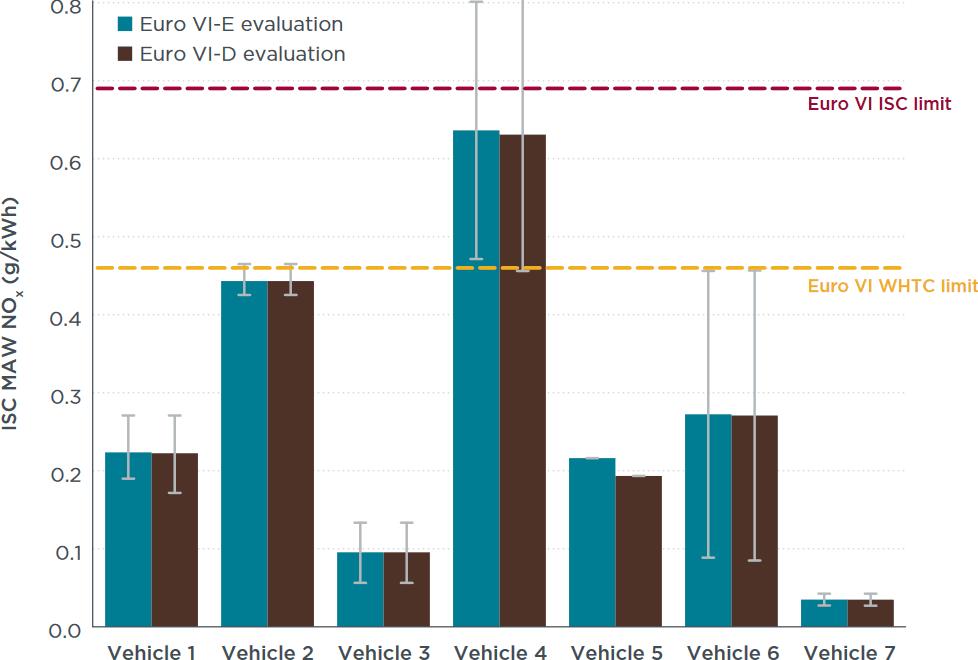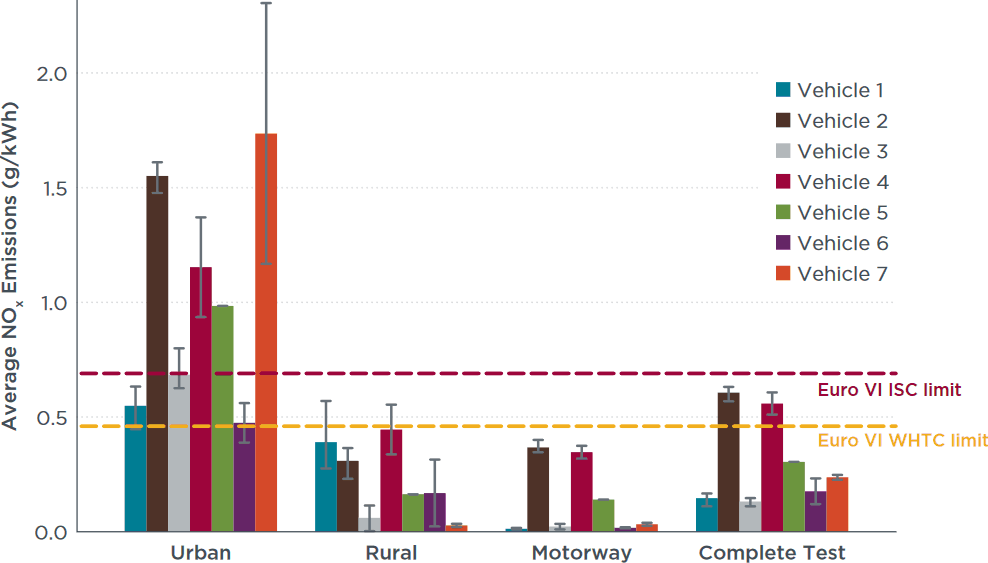ICCT study analyzes real world NOx performance of Euro VI-D trucks
5 July 2021
A new study by the International Council on Clean Transportation (ICCT) [5164] found that real world NOx emissions from a sample of Euro VI-D trucks were below the applicable regulatory limits. However, it was also found that urban operation—responsible for 50% to 90% of total NOx emissions from the trucks tested—has not been adequately covered by Euro VI D or E emission testing procedures.
The study tested seven Euro VI-D vehicles under real driving conditions using portable emissions measurement systems (PEMS). The results were evaluated according to both the Euro VI-D and Euro VI-E in-service conformity (ISC) provisions. Somewhat surprisingly, the Euro VI-D and Euro VI-E evaluations yielded nearly identical results, Figure 1. This suggests that many Euro VI-D trucks already meet stage E NOx requirements, and that the Euro VI-E stage brings a negligible, if any, air quality improvement.

Euro VI ISC limit (0.69 g/kWh) equals the WHTC limit (0.46 g/kWh) multiplied by a conformity factor of 1.5.
The Euro VI-E regulation (effective 2020.09/2021.09 for new types/all vehicles) modifies the ISC test procedure by lowering the minimum coolant temperature for the start of data evaluation from 70°C to 30°C. This change was introduced to make the ISC test more representative of cold start conditions. In practice, however, the Euro VI-E procedure still does not capture cold start emissions.
A key reason is the data evaluation procedure, where only 90% of the MAW windows must exhibit average NOx emissions below the ISC limit. The ICCT results suggest that the 10% of data (MAW windows) that is not used to assess compliance accommodates most of the cold start operation in real driving. In addition, some windows with low temperature operation are invalidated by the Euro VI-D/E 10% PEMS power threshold requirement.
The NOx emissions measured from all ISC tests (i.e., under Euro VI-D provisions) were analyzed by binning the data in urban, rural, and motorway operation, Figure 2. Urban operation invariably resulted in the highest NOx emissions for all trucks, followed by rural and motorway operation. Urban NOx emissions ranged from 0.39 g/kWh to 2.30 g/kWh, and were, on average, around 4 times higher than NOx emissions over the complete tests, 2.2 times higher than the WHTC limit, and 1.5 times higher than the ISC limit.

The results in Figure 2 and further analysis in the ICCT report suggest that the current Euro VI provisions for ISC on-road tests have limitations capturing some real-world operating conditions with high NOx emissions, such as cold-start, low-load, and low-speed driving.
The ICCT has called to strengthen the emission limits and testing provisions in the upcoming Euro VII emission regulation to better control NOx emissions from urban driving.
Source: ICCT